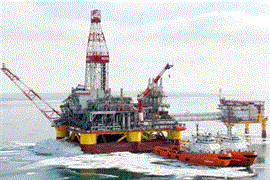Latin potential
25 April 2008
Until recently Latin America was not a region closely associated with strong or stable construction growth but that has started to change in recent years. Brazil has attracted attention as one quarter of the rapidly growing so-called BRIC nations - Brazil, Russia, India and China - but activity is also increasing in other Latin American countries.
But this growth is only a recent turnaround - Latin America’s construction markets contracted, in constant dollar terms, between 1999 and 2003. Between 2000 and 2005, annual compound growth was negative, with growth in the residential sector insufficient to offset declines in the infrastructure and non-residential construction market.
Recovery started in 2004 with construction markets expanding by around +10% in real terms and, although growth has since slowed, the sector is still expected to increase by nearly +5% in 2006.
South America’s construction markets are often tied to political events and election years and the year before generally produce strong growth as officials prime the pump to ensure re-election. With a number of regional presidential election in 2006, it is likely that federal support for construction spending will tail off in 2007 and, while a further slowdown is possible, growth of around +4% is expected over the next decade.
However, the outlook for the region is not uniform. Chile has offered the greatest stability and will continue to benefit from strong metals prices, particularly copper. Venezuela, on the other hand, has the weakest prospects in the region - while buoyed by oil wealth, government intervention in areas of private ownership will inhibit investment. The rapid growth associated with high oil prices will slow as energy prices return to lower levels, and economic growth will decelerate over the coming quarters.
Brazil’s central bankers have succeeded in reducing not just inflation, but also inflationary expectations. This will encourage investment and consumption spending as well as reduce the debt service payments of the government, freeing up funds for the infrastructure spending normally funded by central governments. Additionally, Brazil’s economy is dependent upon exports, and slowing, but continued worldwide economic growth will continue to fuel Brazil’s manufacturing sector. Brazil is the only Latin American country to make the top 15 construction market list both in size and growth potential.
The Argentine economy is now in its fourth year of growth. Gross fixed investment remains extremely positive as both domestic and foreign entities continue committing funds to expanding installed capacity and basic infrastructure. The areas of concern for Argentina are a possible resurgence of inflation and a scarcity of electricity that may require future industrial investments to procure their own energy sources.
The outlook for Peru also remains bright. Sound monetary and fiscal policy have created a stable economic climate, and favourable external conditions have boosted exports by +40%, particularly in the mining sector. The predictable result has been a positive investment picture which is expected to continue over the next few years.
Taken together, Latin America’s construction prospects over the next five years at +4.3% compound annual real growth pale in comparison to non-Japan Asia’s +7.3% outlook. However, they remain higher than those of any other region including Eastern Europe (+4.1%) and the Middle East (+3.5%), and well above the world average of +2.6%.
Construction equipment, building materials and contracting and services companies would do well to pay careful attention to this promising region.


